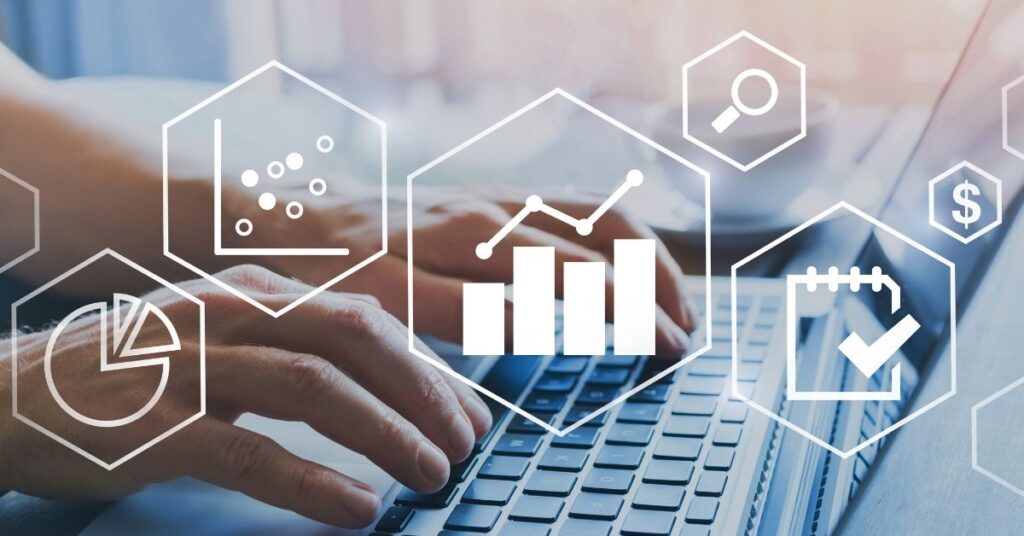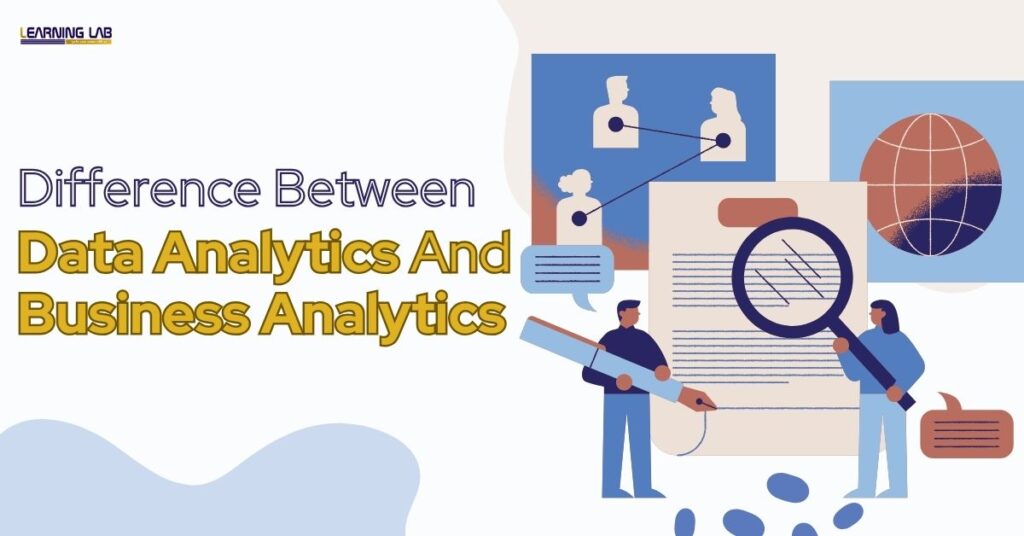To say analytics has become the backbone of decision-making for businesses across industries, wouldn’t be an exaggeration. But do you know the difference between data analytics and business analytics?
This question often pops up among students and professionals trying to make a career in analytics. While the two terms may seem interchangeable, they have distinct purposes, processes, and outcomes. Let’s find out more about it in this article!
What Is Data Analytics?
Data Analytics refers to the science of examining raw data to uncover trends, patterns, and insights. A data analyst primarily focuses on collecting, cleaning, and interpreting data to provide actionable information. Their work often revolves around:
- Data Cleaning: Ensuring the data is accurate and free of inconsistencies.
- Exploratory Data Analysis (EDA): Using tools like Python, R, or Excel to identify trends.
- Visualization: Creating dashboards or reports using tools like Tableau or Power BI.
- Statistical Modelling: Employing mathematical models to predict future trends.
After all, data analytics is about making sense of numbers to tell a story.

Roles and Responsibilities of a Data Analyst
- Collecting and organizing large datasets.
- Identifying trends and correlations within the data.
- Presenting findings to stakeholders using visualization tools.
- Assisting organizations in making data-driven decisions.
If you’re passionate about solving complex problems and have an eye for detail, a career in data analytics could be perfect for you. ZELL’s specialized courses in data analytics can help you gain the right skills and tools to excel in this field.
What Is Business Analytics?
Business Analytics takes a step further by focusing on using data insights to drive business strategies and decisions. Unlike data analytics, which is more technical, business analytics blends data insights with business knowledge to solve organizational challenges.
A business analyst bridges the gap between technical teams and business stakeholders. Their key focus areas include:
- Strategic Analysis: Aligning data-driven insights with business goals.
- Requirement Gathering: Understanding the needs of various stakeholders.
- Process Improvement: Recommending ways to enhance operational efficiency.
- Forecasting: Using data to predict business outcomes and trends.
Roles and Responsibilities of a Business Analyst
- Identifying business problems and opportunities.
- Liaising between the IT and business teams.
- Defining and documenting business requirements.
- Proposing data-driven solutions to enhance business performance.
Business Analytics vs Data Analytics
Now that you understand both terms, let’s highlight the difference between data analytics and business analytics:
| Features | Data Analytics | Business Analytics |
| Focus | Data interpretation and insights | Business decision-making |
| Skillset Required | Strong technical and statistical skills | Combination of data skills and business acumen |
| Tools Used | Python, R, Tableau, SQL | Excel, Power BI, SAP, Tableau |
| Outcome | Patterns, trends, predictions | Strategies, solutions, process improvements |
| Typical Role | Data Analyst | Business Analyst |
Business Analyst: What Do They Do?
Now that you know the difference between data analytics and business analytics, let’s get to the next part. If you’re asking yourself, “Business analyst, what do they do?” here’s the answer:
A business analyst’s primary goal is to help companies optimize processes and achieve their objectives. They work closely with stakeholders to gather requirements and translate them into actionable plans.
Here’s a typical day in the life of a business analyst:
- Requirement Gathering: Meeting stakeholders to understand their needs.
- Data Analysis: Collaborating with data analysts to understand trends.
- Solution Proposals: Recommending actionable strategies to solve business problems.
- Documentation: Creating reports, business models, and workflows.
- Implementation Support: Ensuring proposed changes are successfully implemented.
Which Career Path Should You Choose?
Are you still wondering whether to choose data analytics or business analytics? Consider these factors:
- If you enjoy coding, working with large datasets, and statistical modeling, data analytics might be your calling.
- If you have strong communication skills, a knack for problem-solving, and an interest in business processes, business analytics could be a better fit.

ZELL’s Role in Your Career Journey
Whether you choose data analytics or business analytics, ZELL’s courses are designed to help you gain industry-relevant skills and land your dream job. With a blend of theoretical knowledge and real-world projects, our programs ensure you are job-ready from day one.
Why Choose ZELL?
- Hands-on training in tools like Python, Tableau, and Excel.
- Access to real-world projects and case studies.
- Placement assistance with top MNCs.
- Experienced mentors from the industry.
On A Final Note…
While data analytics focuses on interpreting data, business analytics uses these insights to drive business decisions. Both fields offer rewarding opportunities for professionals equipped with the right skills and mindset – and that is exactly why any one interested in the field of analytics should know about difference between data analytics and business analytics!
So, what’s stopping you from kickstarting your analytics career? Enroll in ZELL’s courses today and take the first step towards a successful future.





